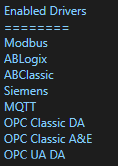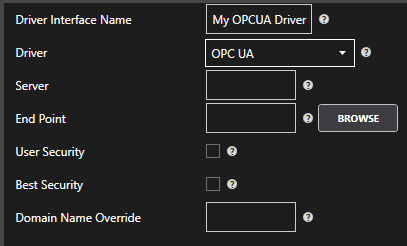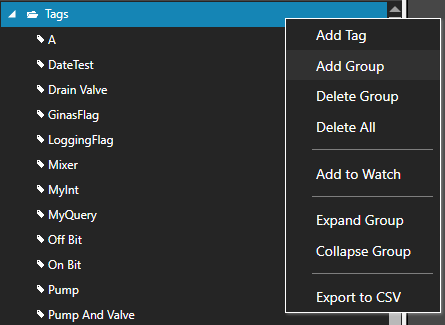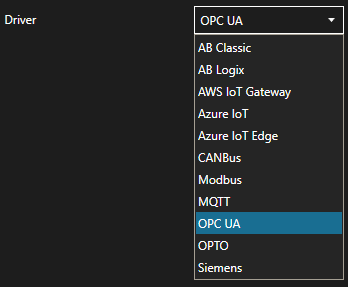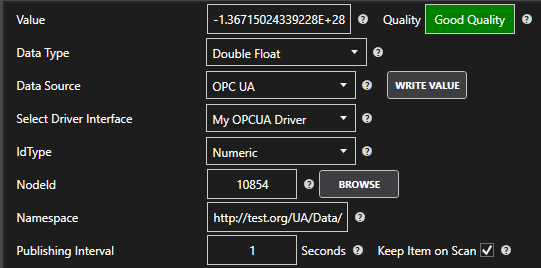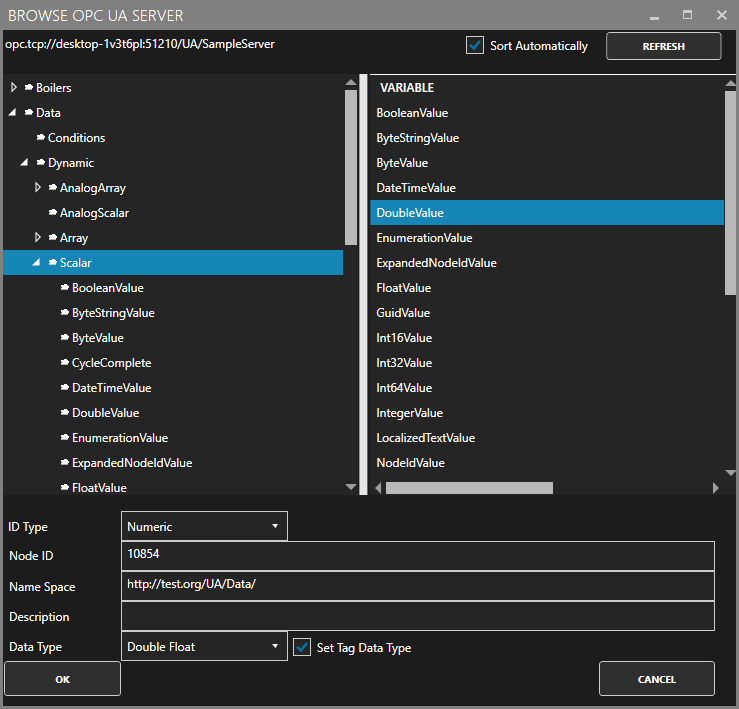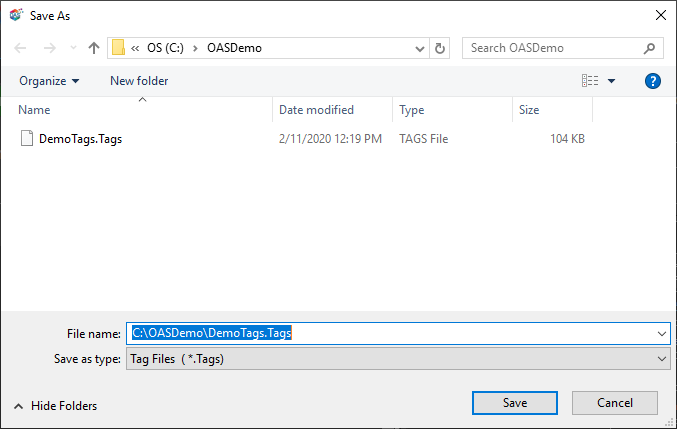Getting Started OPC UA
OAS is both an OPC UA Client and OPC UA Server.
Open Automation Software Tags can be defined to connect to OPC UA Servers with the built in OPC UA Driver Interface.
If you want interface OAS with an OPC UA Client please see the Getting Started OPC UA Client guide.
The following steps can be used to setup communications with OPC UA Servers.
Step 1
 Start Configure OAS application from the program group Open Automation Software.
Start Configure OAS application from the program group Open Automation Software.
Step 2
Select Configure-License and verify that OPCUA is one of the available Drivers in the lower left of the form. If you do not see the OPCUA driver update your Open Automation Software to the latest version.
Note: You will need to be running Open Automation Software Version 10.0.0.12 or greater to support OPC UA communications. You can download the latest version from our Open Automation Software Download page.
Step 3
Select Configure-Drivers.
Step 4
Select localhost or the remote service you wish to modify with the Select button to the right of the Network Node list.
Note: Optionally select the Live Data Cloud node if you are hosting OPC UA data over the Internet with a standard Internet connection.
Step 5
Enter a meaningful Driver Interface Name that you will refer to this physical connection when defining Tags with an OPCUA Data Source.
Define the properties for the connection to the OPC UA server.
Set the Driver to OPC UA.
Note: If you enable security the certificate path is C:\ProgramData\OpenAutomationSoftware\pki on Windows and /ConfigFiles/pki/ on Linux.
Optionally define a secondary failover server if the primary server fails with the property Enable Failover.
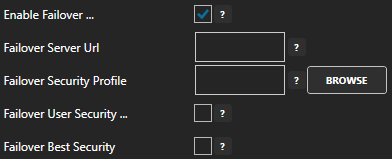
If both the primary and secondary servers are offline the Return to Online settings determines the retry frequency.
View Driver Interface Failover for more information and and video demonstrating communications failover.
Step 6
Select the Add button in the lower part of the form to add the Driver Interface as an available selection when defining Tags in the next step.
![]()
Note: If you need to define several Driver Interfaces you can use the CSV Export and CSV Import on the toolbar in the upper right together with Microsoft Excel.
Step 7
Select Configure-Tags.
Select localhost or the remote service you wish to modify with the Select button to the right of the Network Node list.
Note: Optionally select the Live Data Cloud node if you are hosting OPC UA data over the Internet with a standard Internet connection.
Step 8
Select to Add a Tag.
Note: You can also add organizational Groups as many levels deep as you prefer and add tags to groups. To do this first add a Group to the Tags Group at root level, then right click on the Group in the right window to add additional Groups or Tags.
Step 9
Change the Data Source Tag property to OPCUA.
Step 10
If you have more than one OPC UA Server defined in the Driver Interfaces select the desired Driver Interface.
Step 11
Specify the desired Polling Rate for the Tag.
Use the Browse button to browse the OPC UA Server for the IdType, NodeId, Namespace, and Data Type or manually set them.
Note: If you are unable to connect to the OPC UA Server due to a certificate security error go to C:\ProgramData\OpenAutomationSoftware\pki\ on Windows or the pki sub-directory where the OAS Engine is located on Linux and copy the files in the rejected\certs directory to trusted\certs.
You can also enter the domain name in the Domain Name Override when Use Security is enabled.
Step 12
To define multiple tags use one of the following optional methods.
- Use One Click OPC UA to automatically create tags from all OPC UA Nodes from a selected OPC Server or branch within an OPC Server. Then selectively delete the groups and tags that are not required.
- Use CSV Export and CSV Import on the toolbar in the upper right together with Microsoft Excel to add or modify tags.
- Programmatically define Tags using the free to use OASConfig component with the TagCSVImport method.
- Programmatically define Tags with the OAS REST API.
Step 13
Select the Save button on the toolbar at the top.
Step 14
Create a directory on the local C: drive on Windows or sub folder on Linux with the name OASDemo.
Save the file DemoTags.tags in the directory C:\OASDemo.
Step 15
Under Configure – Options set the Default Tag Configuration File so when the computer restarts the tag file will automatically be loaded.

